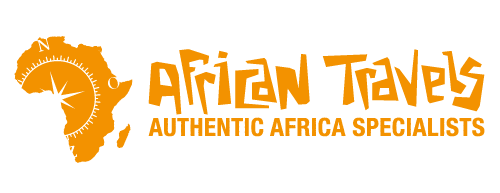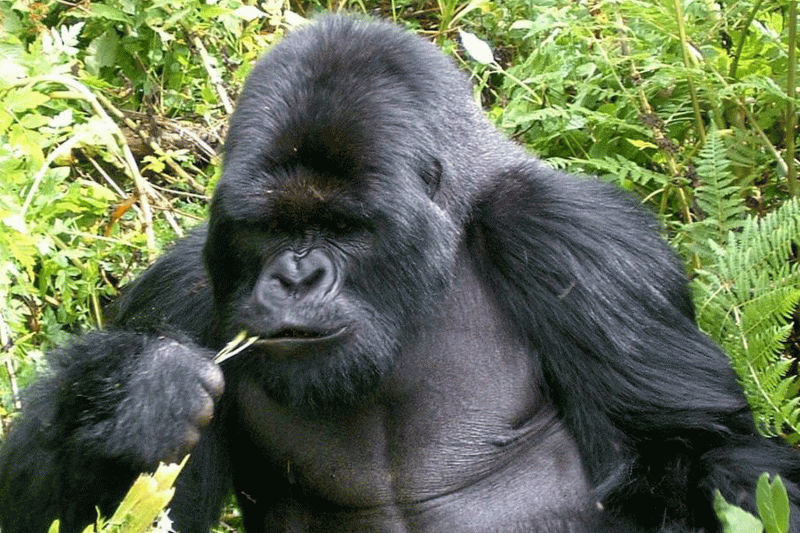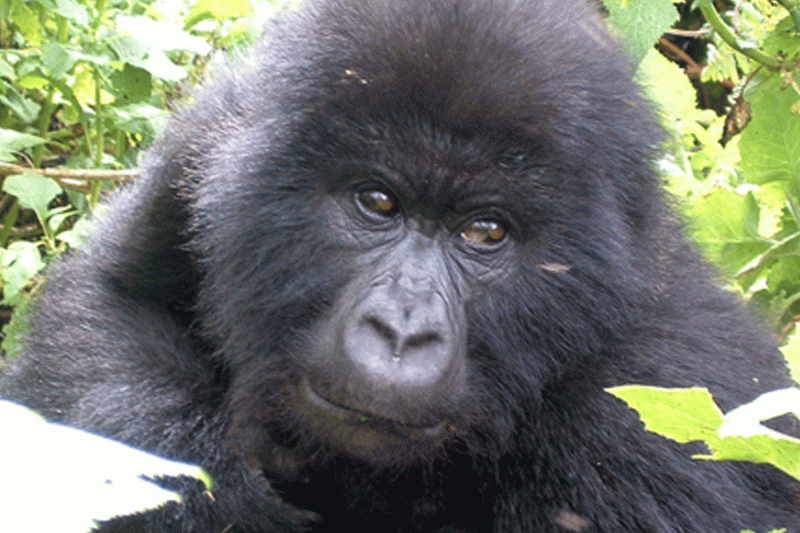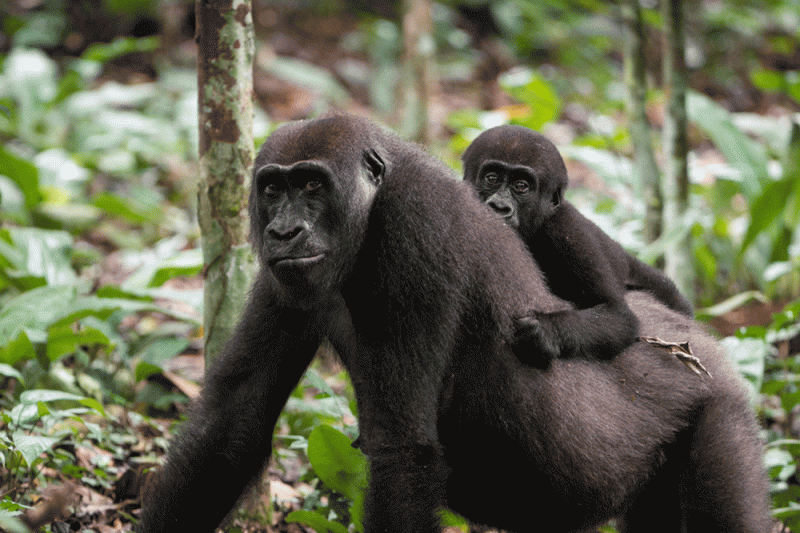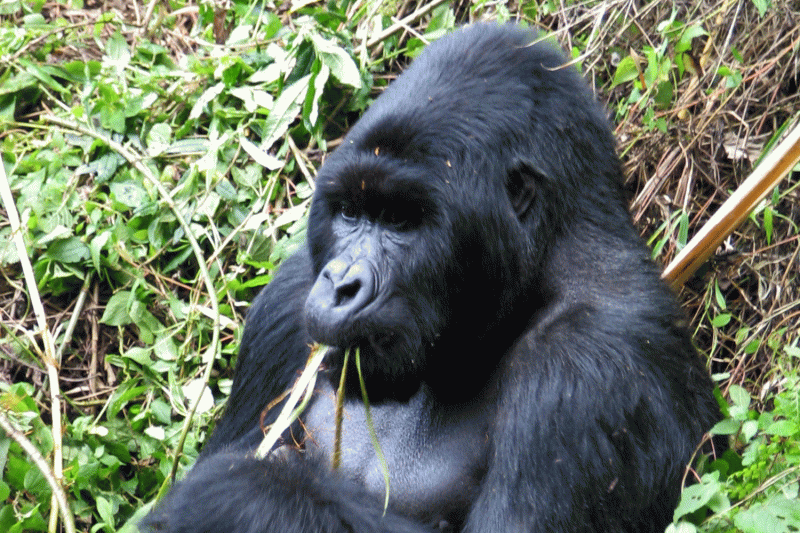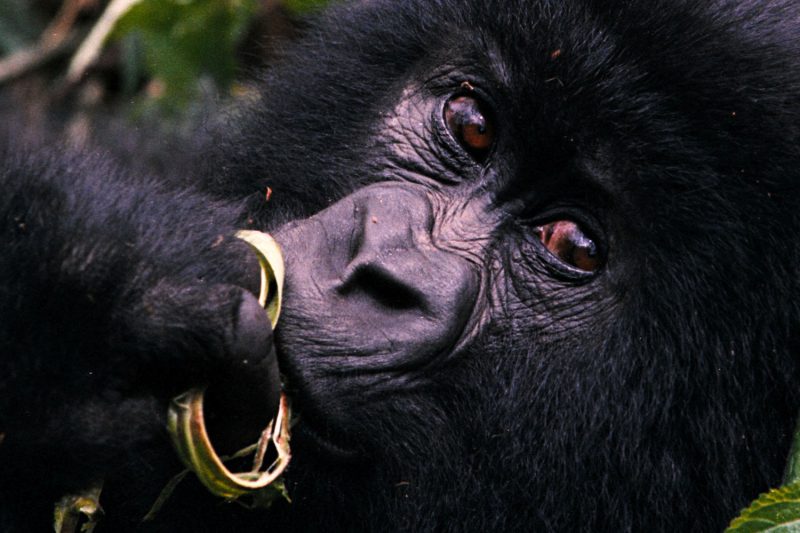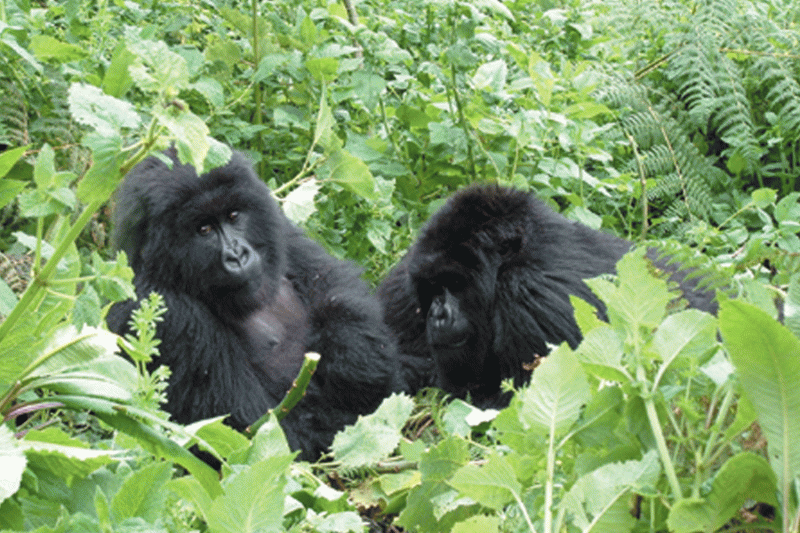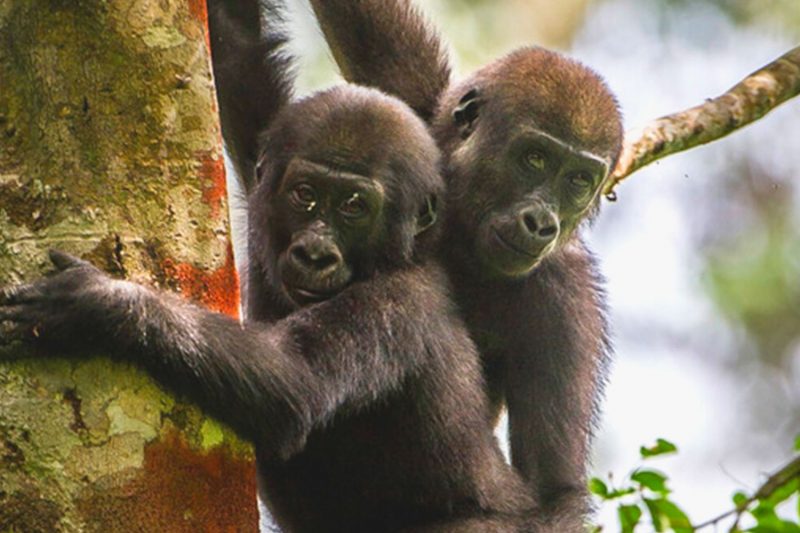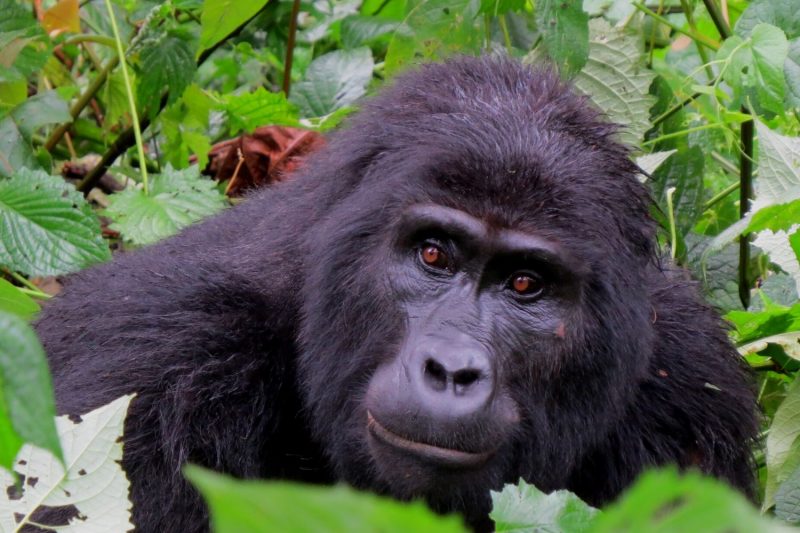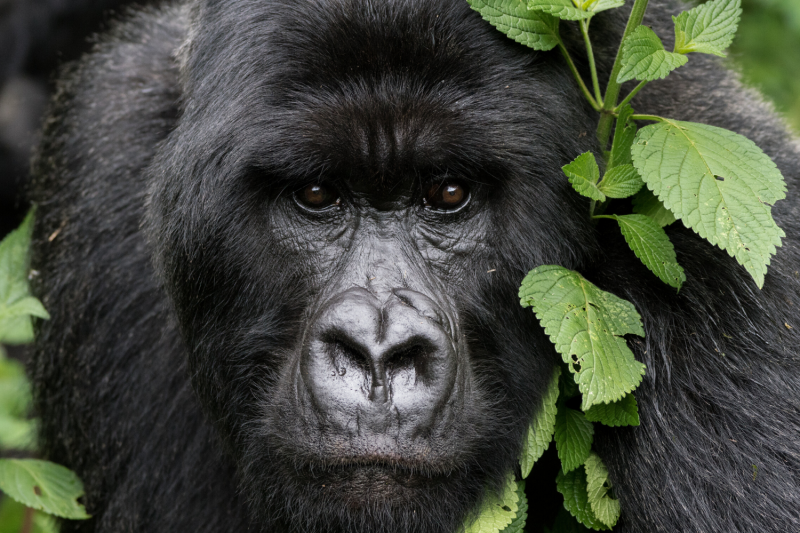The trek can be over quite quickly or take all day depending on the location and the time it takes to find them. Some sections of the trek can be quite steep and you will trek through very dense (seemingly impenetrable!) vegetation at quite high altitude, up to 3,000 metre. (The highest point in Bwindi is 2,607 metres.) The gorillas can move around as well so it can take a while to find them, and it can be quite wet and slippery underfoot.
Whilst there are never any guarantees you will see the gorillas, on 99.9 % of treks the gorillas are located, and usually they are found within a few hours. We take on average 30 clients to the gorillas a month, and over the past 30 years only a hand full of clients have not seen the gorillas, so your chances of seeing the gorillas are very high.
Once found you have an hour with them as they continue on with their daily routine – feeding (which they do for about 30% of the day), slowly moving and foraging which usually absorbs another 30% of the day and then for the rest of the time they sleep and sunbathe. Sometimes they are found in thick vegetation, perhaps in a bamboo stand. Other times a group might be found in a clearing, which is a very special privilege. Whilst every trek is different once found the guides will carefully push back the vegetation as much as possible without disturbing the gorillas to enable everyone in the group the best views.
You will need to take your lunch, drinking water, hat, sunscreen, something warm and waterproofs with you as well as your camera on your gorilla trek. Gloves are not a bad idea as there are stinging nettles in the park. Tuck your trousers under thick socks to protect yourself from ants. If you are carrying a heavy rucksack or bag, it is worthwhile employing a porter for about USD 10 or 20 a day. This will enable you to slip and slide without worrying about dropping your camera and leaves you hands free to support yourself. A walking stick is also useful.

